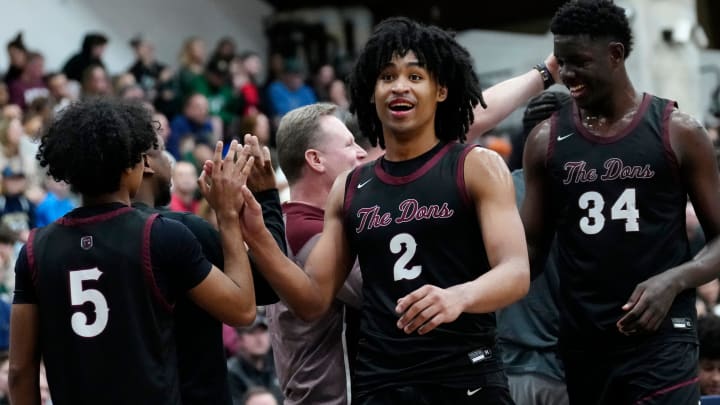NBA Draft: Examining Dylan Harper's Finishing

Dylan Harper, the No. 3 ranked RCSI recruit in the class of 2024, is widely considered as the best point guard in the early stages of the 2025 draft cycle. That's thanks to his superb craft in getting to his spots as a ballhandler. Whether it's getting to the rim, stepping back for a midrange jumpshot, or pulling up from three, he utilizes his size and physicality along with good handling creativity and general craftiness to routinely get to his spots.
But, despite reportedly being measured at a massive 6-foot-5 and 238 pounds, Harper has never been a dominant rim finisher in his career. In five EYBL and AAU seasons tracked by Synergy Sports since 2021, he's only once finished in the 60th percentile or above in rim frequency. During the 2023-24 AAU season last year, he finished in the 48th percentile in frequency and 63rd percentile in efficiency at the rim.
Harper experimenting with his pull-up jumper (which has led to lots of growth as a shotmaker) is likely partly to blame for the mediocre rim rate last season, but he also wasn't dominant as a finisher from an efficiency standpoint. That's due to struggles finishing around the second layer of defense which stems from poor ballhandling security and early pickups, which hold back both his frequency and efficiency at the rim.
Despite pairing good ballhandling counters (crossovers, spin move, behind-the-back dribble) with acceleration and physicality to get by his defender, his handle is exposed to pokes and digs, partly because of his long wingspan (6-foot-10). This poor ball security leads to early pickups vs. gap help and in traffic, which creates problems when it's time to extend and finish around a help defender.
Dylan Harper has an iffy handle that holds him back as a downhill scorer. While he pairs good handling counters (crossovers, spin move, behind the back dribble) with good burst and physicality (6’7, 238 lbs) to get by his defender, his handle is exposed to pokes and digs partly… pic.twitter.com/jFAx5QxCGi
— Maurya K. (KR) (@TheFlarescreen) August 24, 2024
The good thing is that all this is fairly easily fixable. Many young creators deal with the issue of early ball pickups. All Harper has to do is tighten his handle, which will improve his ball security in tight spaces and allow him to keep his dribble alive longer and deeper into the paint. That'll be key to his viability as a go-to advantage creator at higher levels, as doing that will allow him to both get to the rim and finish at higher rates. The potential of pairing his craftiness with improved finishing and growing shotmaking is what makes Harper so appealing as the class' premier lead guard.
Want to join the discussion? Like Draft Digest on Facebook and follow us on Twitter to stay up to date on all the latest NBA Draft news. You can also meet the team behind the coverage.
